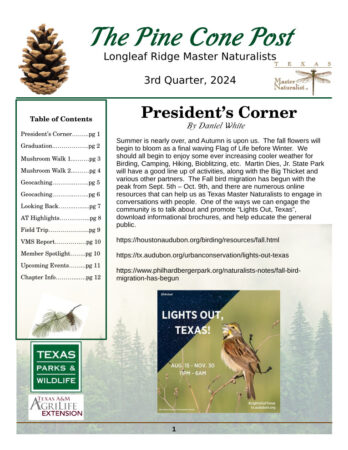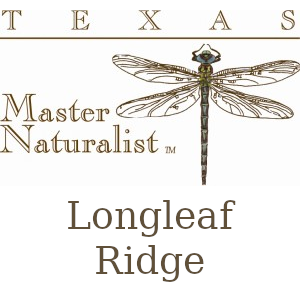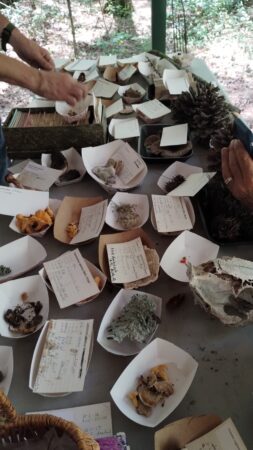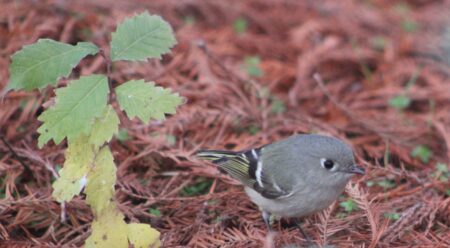The 2024 Q3 Newsletter is now available and posted to the Newsletter page. … [Read more...] about 2024 3rd Quarter Newsletter
Graduation Class of 2024
Congratulations Graduates! Plus awesome job to our Jr. Master Naturalist To view/add more photos follow this link to the Google Drive:Google Drive: 2024 Graduation … [Read more...] about Graduation Class of 2024
2024 June Mushroom Walk
Google Drive Folder: 2024 Mushroom WalkUse the link above to View/Add photos of the Mushroom Walk. … [Read more...] about 2024 June Mushroom Walk
Reporting Service Hours
For those looking for the link where to log and report your service hours click here--> https://txmn.tamu.edu/chapter-resources/tmn-vms-users/ … [Read more...] about Reporting Service Hours
2024 Neches River Rendezvous
The Angelina & Neches River Authority is looking for volunteers to help with this event. If you are interested, please download this volunteer guide --> Volunteer Information Guide … [Read more...] about 2024 Neches River Rendezvous
Great Backyard Bird Count
The Audubon's Great Back Yard Bird Count is starting in just a few days. Follow this link for details on how you can participate. https://www.audubon.org/news/how-take-part-great-backyard-bird-count … [Read more...] about Great Backyard Bird Count
2024 Training Class
What a great start for the New 2024 Training Season, as we kick off 12 weeks of intense class room training and several exciting field trips. Looking forward to a great year. … [Read more...] about 2024 Training Class
2024 Initial Training Dates and Classes
2024 Training ClassesDates: February 13th - May 7th, 2024Times: 6:00 - 9:00 PM Every Tuesday NightCost: $120 per person ($160 per couple if sharing a training manual)Location: St. Michael's Catholic ChurchPayment: may be made at the introduction class on Feb. 13th … [Read more...] about 2024 Initial Training Dates and Classes
2023 Winter Newsletter
The 2023 Winter Newsletter is now available and posted to the Newsletter page. … [Read more...] about 2023 Winter Newsletter
Dogwood Trail Rehab
For those that don’t know, back in the day, the Texas Forestry Association kept and maintained several hiking trails on land scattered throughout Southeast Texas. As the land ownership has changed, almost all of the trails have been lost. The Dogwood Trail in Tyler County was owned and … [Read more...] about Dogwood Trail Rehab









